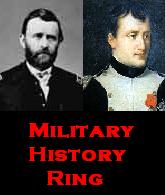Cross-posted on Frontier Battles.
I was recently contacted about a new two-player strategy game that deals with the War of 1812 that will be launching on Kickstarter later this week. Created by Hand2Hand Entertainment, Sabres and Smoke: The War of 1812 looks to be an interesting and tantalizing game that employs a mechanic similar to the game Commands & Colors: Napoleonics, though with some differences. You can view a video they have created below.
I recently reached out to them for a Q & A via email with Eric, one of the creators and wanted to share it with you all to let you know about this game.
How long has your company been in existence?
Our founder started working on Sabres and Smoke: War of 1812 in July of 2016. Sabres and Smoke is our first game.
What is your company’s overall mission?
We want to create a game that has a high level of historical accuracy but is also fun and not to complicated to learn. We hope that this get people interested in the War of 1812 and want to learn more about it.
How did you come to choose the War of 1812 as the conflict you would design a game around, and, what interested you about this particular conflict?
We chose the War of 1812 because there are very few other board games that focus on the War of 1812. There are lots of games that focus on other wars but we thought a game featuring the War of 1812 would be really unique.
How did you decide on the style of game to create, and, did you consider other types (miniatures, point to point map, etc.)?
We considered elements from different games that we really like and how we could bring those elements together to create something different that we could call our own.
How long was the design process from conceptualization to prototype?
The design process took a very long time. We started making rough drafts of the Battles in August of 2016 and had finished our final prototype of the Game by April 2017.
What has been the biggest struggle during the design and play testing process?
The Biggest struggle was finding different people to play test our game. We played the game ourselves a lot but had difficulty finding other people to play it in the early stages. Since then we were able to have multiple board game bloggers publish reviews of Sabres and Smoke and give us some really valuable feedback. We also play tested it with some 12 year olds to make sure that kids enjoy the game as well.
This question is for those interested in designing their own game. How did you go about designing the components and where did you source them?
We actually did all of the illustration and prototype design ourselves. Creating the prototype copies was very labour intensive for us, it involved a lot of printing and cutting on our end. The only part of the prototype games that we did not make ourselves were the plastic stands and the dice, which we used from sample orders we received from our suppliers.
Why do a Kickstarter campaign?
We decided very early on that a Kickstarter campaign was right for us because it would allow us to raise the money for Sabres and Smoke before it goes into production. This helps reduce a lot of the financial risk that comes along with producing board games on a large scale. Also, a Kickstarter launch is a great way to get people excited about our game.
What are your favorite elements of the game?
My favourite part of Sabres and Smoke is the way units are ordered. A lot of other games like like this have rules that make it difficult for players to carry out their battle strategies. In Sabres and Smoke, the only thing stooping a player from executing their strategy exactly how they planned it is the other player. This adds depth to the game and forces players to think more strategically than they might when they play other games.
Did any interesting situations arise as you play tested the game that potential players should be aware of, or that you realized needed editing?
Not really. There were a few minor things like typos in the rule book and certain battles needing to be more balanced, but there were no major changes that we needed to make to the game.
Do you have plans for expansions of Sabres and Smoke, or creating similar games around other historical conflicts?
We have some extra battles that we are using as stretch goals for our Kickstarter campaign and maybe for an expansion pack to be released later this year. We are not sure what type of game we will create next or if we will create further expansion packs for Sabres and Smoke: The War of 1812, we have been focused lately on making this upcoming Kickstarter a success.
What is the best way to reach out to you regarding the game itself, and/or looking to get involved with your company?
The best way to contact us is by email, you can reach us at hand2handentertainment1812@gmail.com. People can also reach out to us by sending us a message through our website and can receive more information and updates about our game by joining our mailing list. This can be done through our website https://www.hand2handgames.com.
I would like to thank Eric for his time and will be following this project in the coming weeks and am seriously considering backing this, if my finances permit it.














 Bill Fortin, Redeye Fulda Cold: A Rick Fontain Novel. Cold War Publications, 2015. Maps, Illustrations, Photographs. $16.15. 422pp.
Bill Fortin, Redeye Fulda Cold: A Rick Fontain Novel. Cold War Publications, 2015. Maps, Illustrations, Photographs. $16.15. 422pp.
